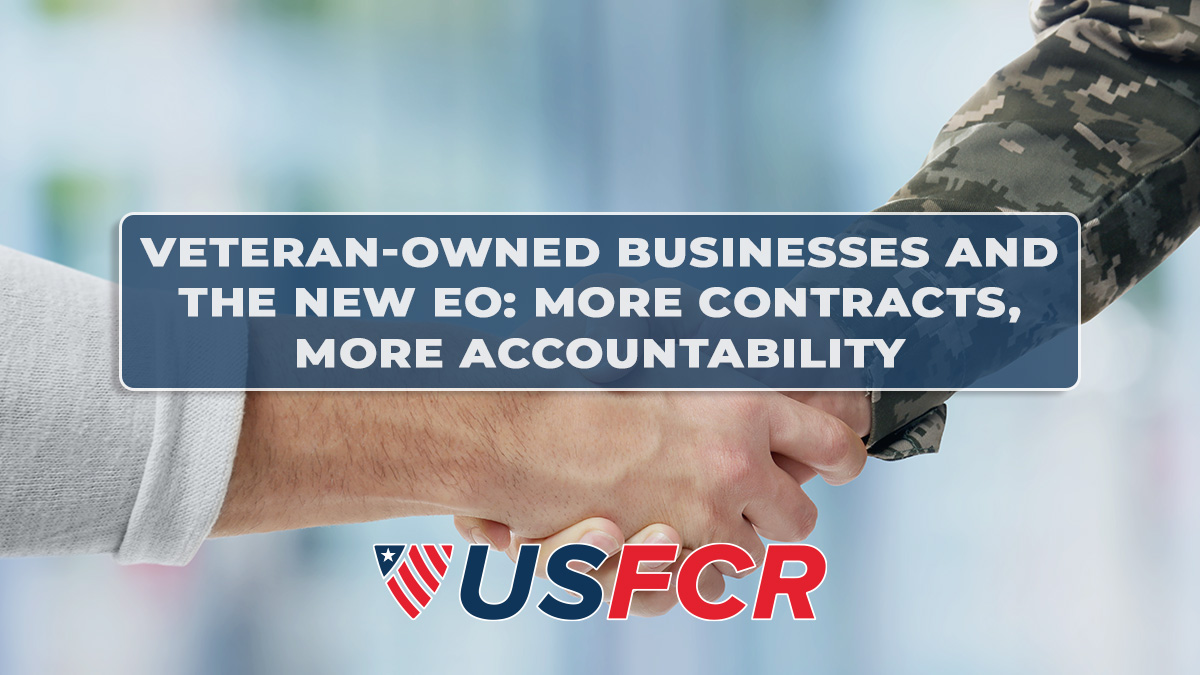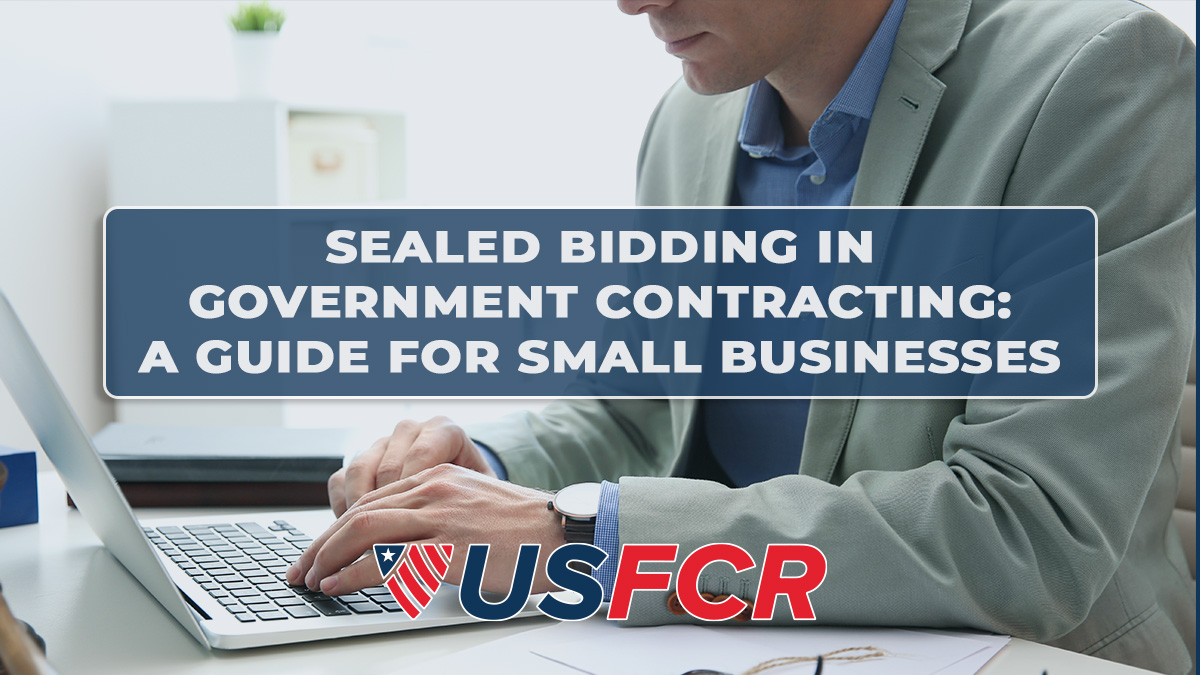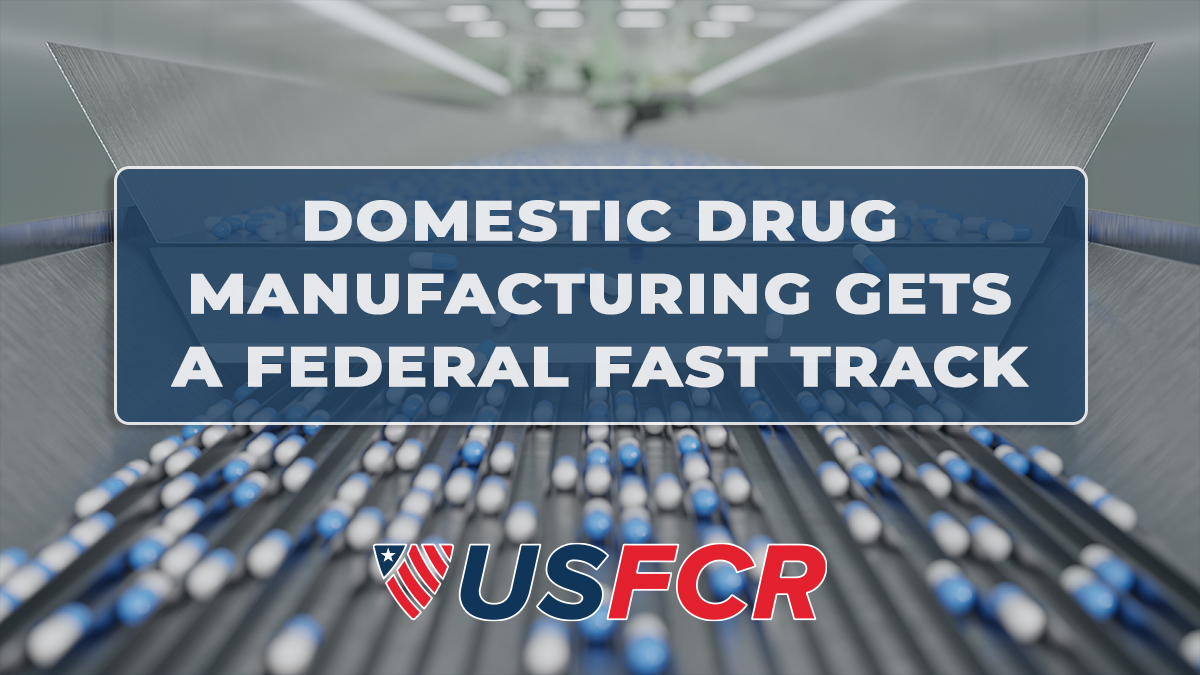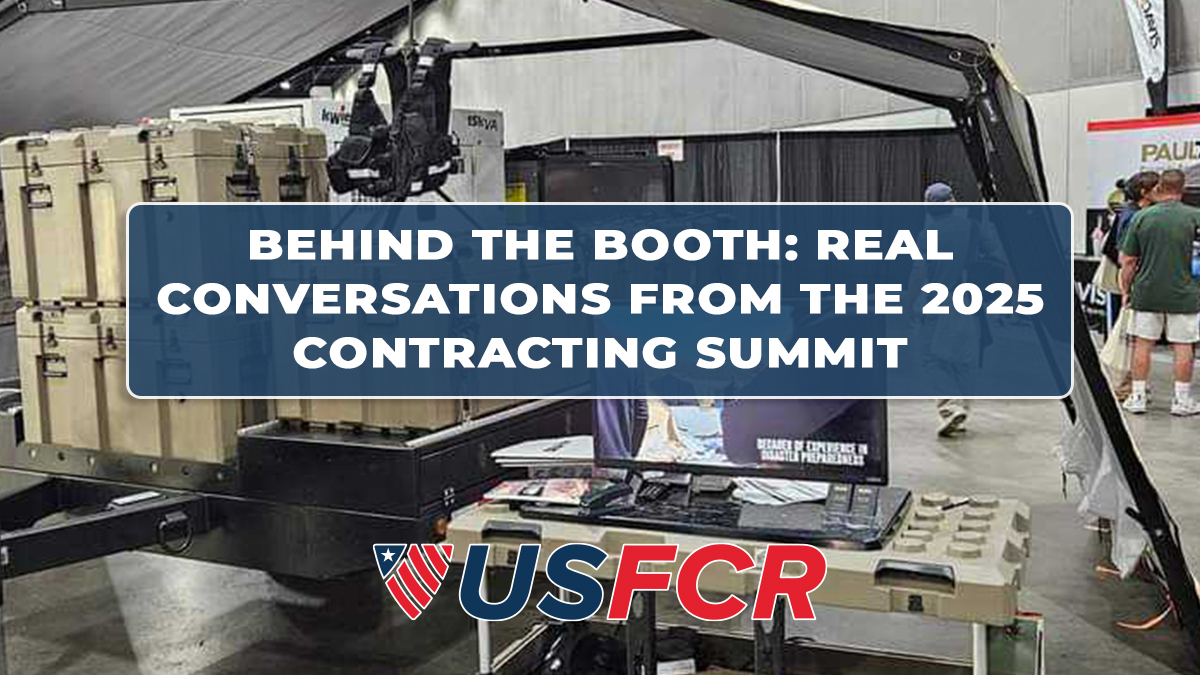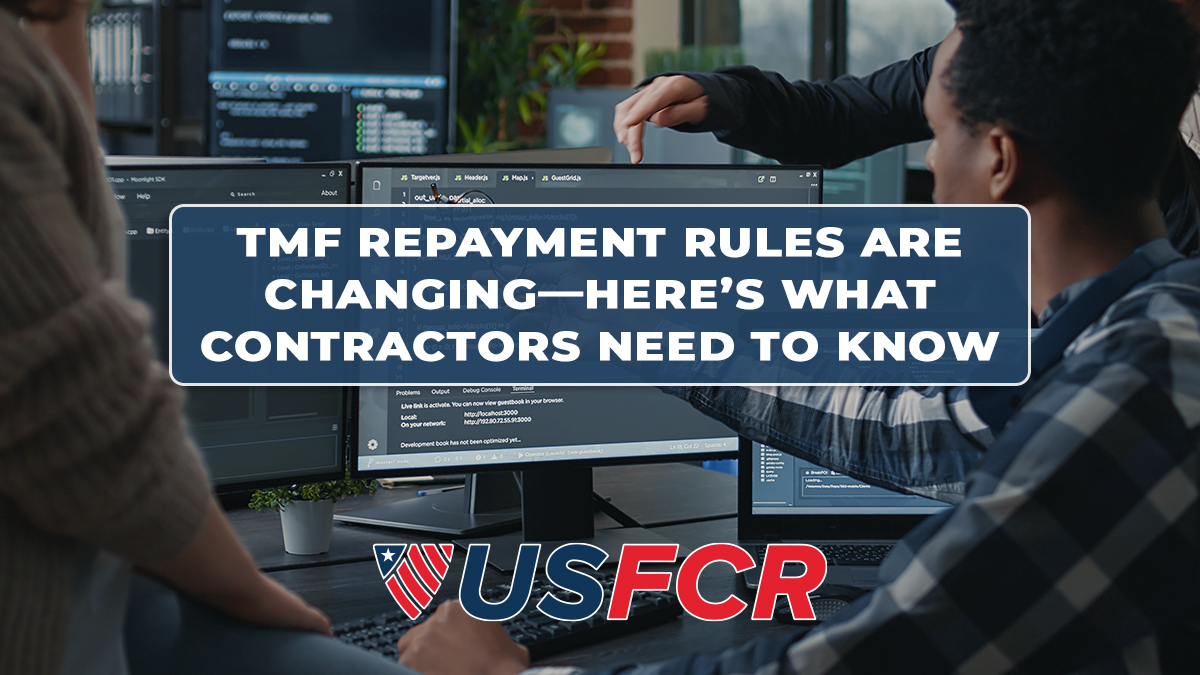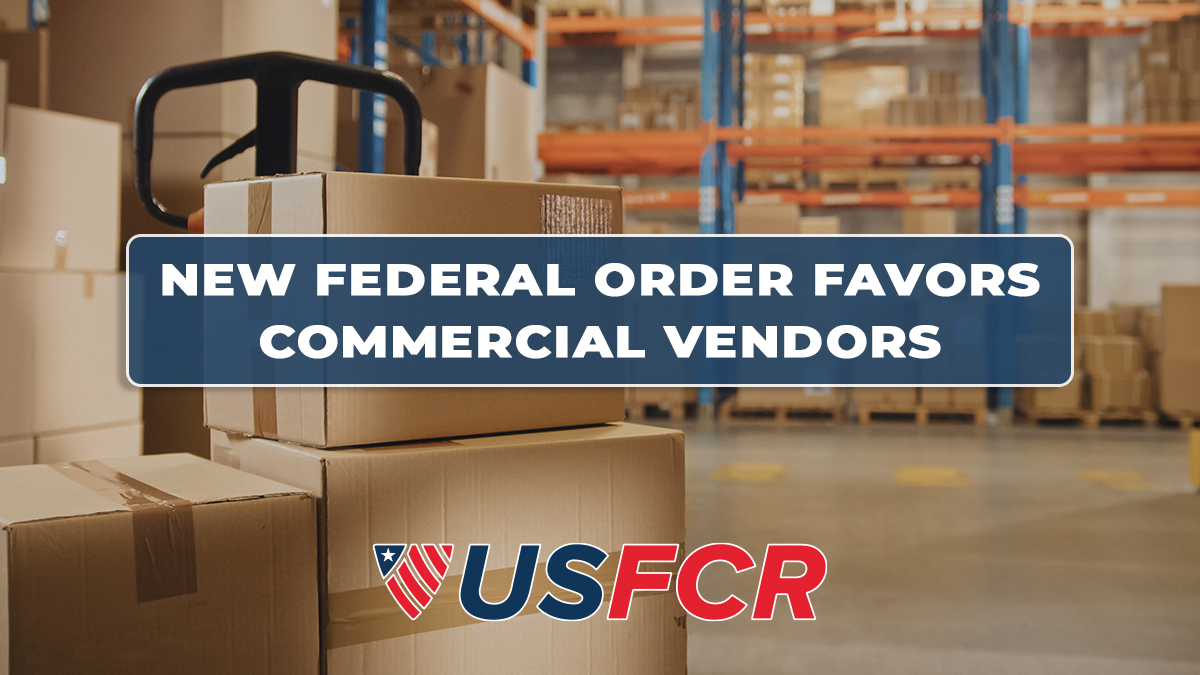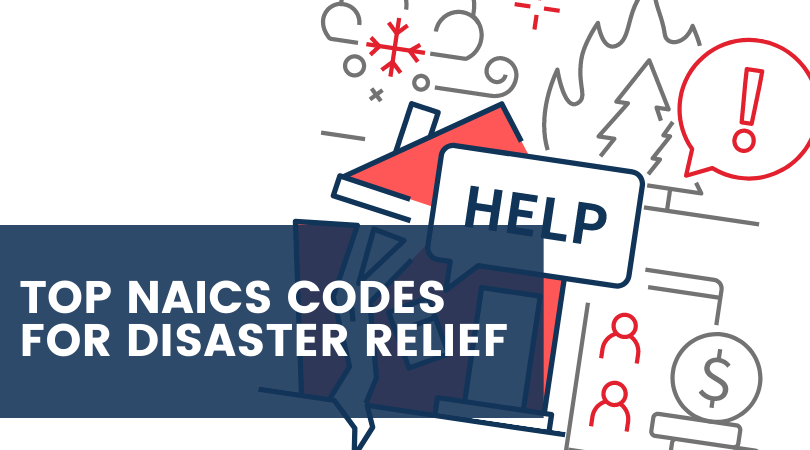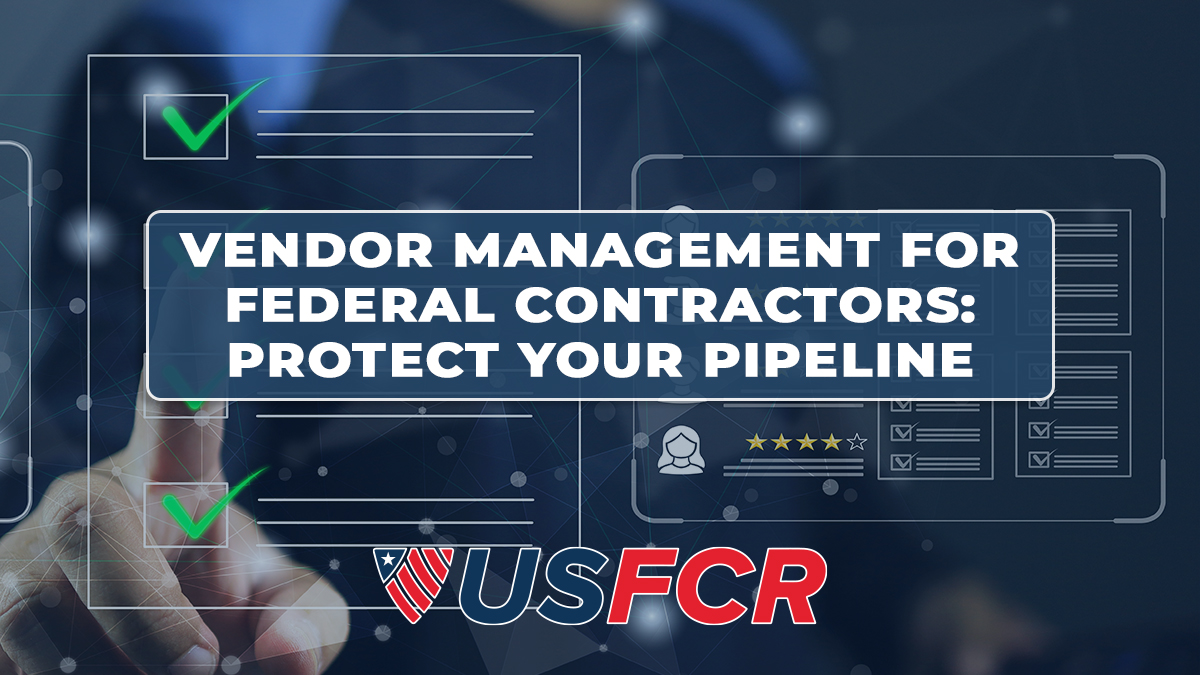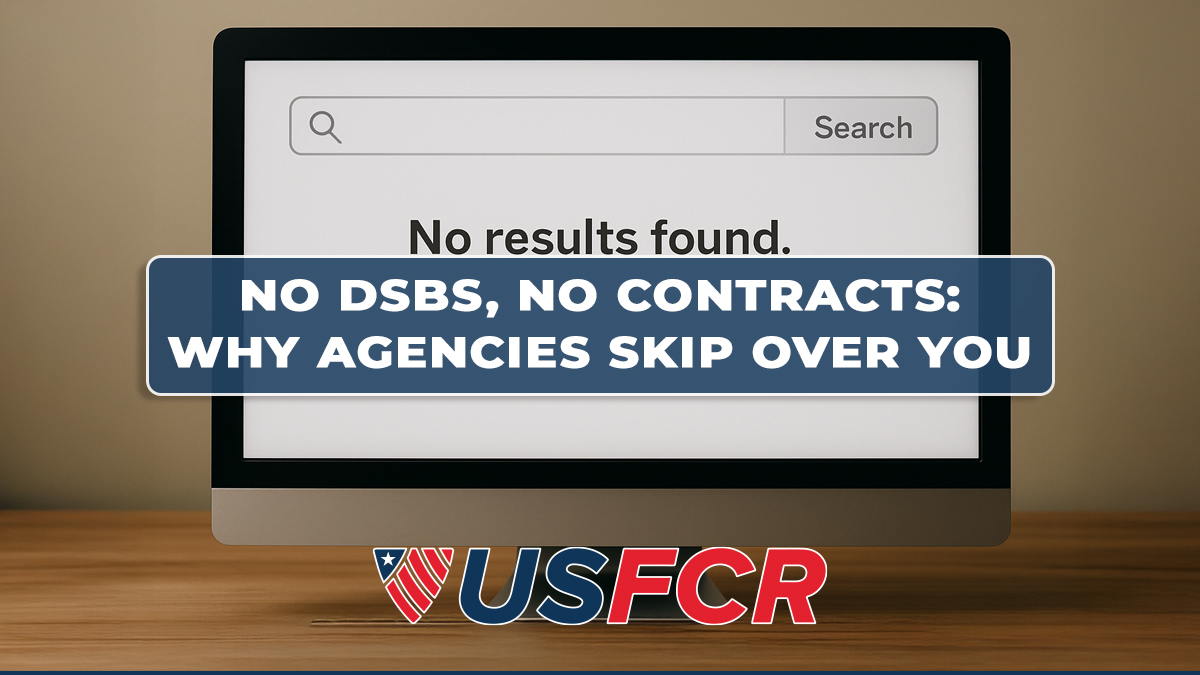A new executive order issued in May 2025 prioritizes long-term care and housing solutions for veterans. It instructs the Department of Veterans Affairs to establish the National Center for Warrior Independence at the West Los Angeles VA campus. The goal is to support up to 6,000 homeless veterans by 2028 through housing, treatment, and reentry programs.
USFCR
Recent Posts
Veteran-Owned Businesses and the New EO: More Contracts, More Accountability
May 13, 2025 12:11:07 PM / by USFCR posted in Veteran Owned Small Business (VETBIZ), News
Sealed Bidding in Government Contracting: A Guide for Small Businesses
May 12, 2025 10:32:57 AM / by USFCR posted in USFCR Academy, Federal Spending
Sealed bidding is one of the most structured and competitive methods used by federal agencies to award contracts. It’s designed to ensure a fair process where the lowest-priced, compliant bid wins. While it sounds simple, mastering sealed bidding requires precision, compliance, and an understanding of the process from start to finish.
Domestic Drug Manufacturing Gets a Federal Fast Track
May 8, 2025 9:00:00 AM / by USFCR posted in News, Industry-Specific Contracting
On May 5, 2025, a new executive order was signed to speed up how quickly U.S. companies can build and expand pharmaceutical manufacturing facilities. It’s a federal response to one big issue: our supply of essential medicines is still too reliant on foreign sources. For federal contractors, this move changes the landscape. If you operate in pharmaceuticals, construction, logistics, or environmental services, you just got a competitive boost.
The 2025 Air Force Contracting Summit in Orlando brought together a wide mix of government agencies, industry leaders, and small businesses. While the Air Force was the anchor, the conversations stretched across nearly every corner of the federal contracting space. From the floor to the matchmaking sessions, the theme was clear: change is happening, and contractors are working hard to keep up.
How the TMF’s Repayment Shift Could Shape Future IT Contracts
May 6, 2025 10:37:54 AM / by USFCR posted in News, Federal Spending, Tech
A Federal Policy Update That Signals Higher Expectations for Contractors
The Technology Modernization Fund (TMF) has updated its repayment policy, prioritizing full repayment for all future awards. This change is set to influence how agencies choose projects, how vendors craft proposals, and how the federal government plans long-term IT modernization. Contractors offering technology, cybersecurity, or shared services will need to adapt quickly to stay competitive.
How Small Businesses Can Win and Manage Architect-Engineer Contracts
May 5, 2025 8:00:00 AM / by USFCR posted in News, Industry-Specific Contracting
Federal construction projects require expert design, planning, and oversight before any work begins. Architect-engineer (A-E) contracts provide opportunities for firms specializing in engineering, architecture, and surveying to contribute to government infrastructure.
For small businesses, these contracts offer high-value projects, but competition is steep, and businesses must qualify based on technical expertise rather than the lowest price.
The Federal Contracting Mandate That Favors Small Business Vendors
May 2, 2025 9:00:00 AM / by USFCR posted in News, Federal Spending
A new executive order, "Ensuring Commercial, Cost-Effective Solutions in Federal Contracts," is changing the rules for federal buyers. Agencies are now required to prioritize commercial products and services over custom-built solutions. That means small businesses with ready-to-sell offerings are in the best position they have been in years.
Top 14+ NAICS Codes for Disaster Relief
May 1, 2025 8:00:00 AM / by USFCR posted in Disaster Relief, NAICS
Top 14 NAICS Codes for Disaster Relief Contracts: Get found fast when disaster strikes.
Federal agencies move quickly when responding to hurricanes, wildfires, floods, and other emergencies. That means they rely on businesses that are already properly registered, listed with the right NAICS codes, and ready to act.
Hurricane season officially starts June 1, but it’s already looking like we’re in for an early start this year. That means the window to prepare is closing fast.
FEMA, the Army Corps of Engineers, and the U.S. Forest Service prioritize vendors with pre-approved contracts and complete SAM registrations. FEMA also maintains an ILP Vendor Profile system and uses pre-awarded contracts to speed up procurement. If your business falls under one of the following NAICS codes, you may already be eligible for emergency contracts, but incomplete registrations or mismatched codes can disqualify you.
Vendor Management for Multi-Entity Federal Contractors: Protect Your Pipeline
Apr 29, 2025 8:00:00 AM / by USFCR posted in USFCR Info, News, Registration & Compliance Management
The Hidden Risks of Multi-Entity Contracting
Federal contracting opens the door to major growth, but it also comes with a long list of responsibilities that can quietly stack up, especially for businesses operating across multiple locations or working with subcontractors.
For many, the challenge isn't winning work. It’s staying compliant once the work begins.
Each registered entity tied to a federal contract must meet very specific conditions: active SAM registration, accurate business listings, proper set-aside certification (if applicable), and consistency across government-facing systems like DSBS and capabilities statements. If just one location falls out of step, or a subcontractor isn’t properly registered, it doesn’t just slow things down. It can bring the entire contract to a halt.
This isn't theoretical. It happens more often than people think.
DSBS: The Secret Search Tool You’re Probably Ignoring
Apr 28, 2025 12:47:13 PM / by USFCR posted in News, Registration & Compliance Management
How Federal Buyers Use DSBS for Market Research and Why Your Profile Matters
Why Contracting Officers Use DSBS
When agencies consider setting aside a federal contract for small businesses, they are required to use DSBS. This is not optional. According to FAR 19.203(d) and SBA regulations at 13 CFR 125.2, contracting officers must search both SAM and DSBS to find eligible vendors.
This requirement is tied to the Rule of Two. If they find at least two responsible small businesses that can perform the work, the contract is set aside for small businesses. If they do not, it can be released for full and open competition. That initial market research starts with a DSBS search.
